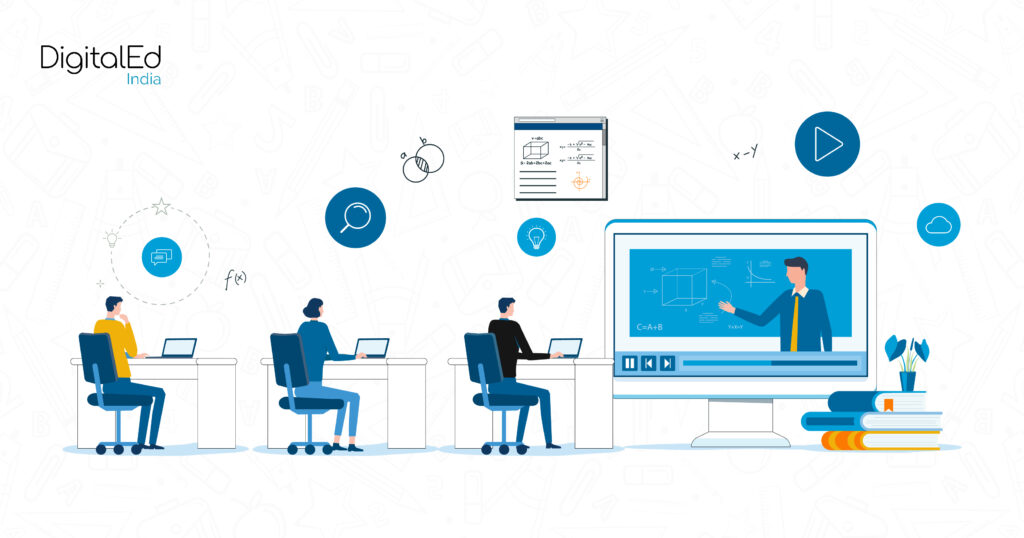Unveiling the Power of Smart Classrooms in STEM Education

“In a smart classroom, knowledge is not just transferred; it’s experienced.”
In today’s rapidly evolving educational landscape, traditional classrooms are giving way to innovative learning environments driven by technology. One such transformational concept is the smart classroom. As we delve into the realm of STEM education (Science, Technology, Engineering, and Mathematics), the integration of smart classrooms becomes not just beneficial but essential for fostering a dynamic and engaging learning experience.
Understanding the Smart Classroom: A Technological Paradigm Shift
The term “smart classroom” encapsulates innovation in education that harnesses digital tools and resources to augment teaching and learning processes. Unlike conventional setups, smart classes leverage a myriad of technologies such as interactive whiteboards, tablets, projectors, and seamless internet connectivity to cultivate an interactive and dynamic educational space.
At its core, a smart classroom embodies adaptability and personalization, tailored to meet the diverse needs of both educators and learners. This adaptability is crucial, as it allows institutions to leverage the full spectrum of digital learning features in a manner that aligns with their unique educational objectives.
Unlocking the Potential: Features of Smart Classrooms
- Interactive Whiteboards: Transforming the pedagogical landscape, interactive whiteboards empower educators to deliver engaging lessons while minimizing manual efforts. These interactive tools facilitate seamless interaction, enabling educators to maximize instructional time and foster classroom interaction.
- Wireless and Cloud Connectivity: With limitless access to educational resources and multimedia content, smart classrooms transcend physical boundaries. Leveraging cloud storage and wireless connectivity, educators can curate a rich repository of learning materials, ensuring students have access to resources anytime, anywhere.
- Multimedia Content: Harnessing the power of multimedia, smart classrooms facilitate immersive learning experiences that resonate with diverse learning styles. Visual aids, simulations, and interactive activities serve as catalysts for knowledge retention, transcending traditional rote learning approaches.
- Remote Access: Embracing the hybrid model of education, smart classrooms extend learning beyond the confines of physical classrooms. Through cloud-based platforms and learning management systems, students gain unfettered access to educational materials, fostering continuity in learning irrespective of geographical constraints.
- Adaptive Learning Platforms: Personalized learning concept is what makes a classroom smart. Leveraging data analytics and in-depth student assessment, blended learning platforms like Möbius tailor instruction to individual learning needs, empowering educators to cater to varying learning paces and preferences within a single classroom setting.
But what is Möbius? Let’s find out with a real-world scenario.
Blended Learning in Action: The Möbius Experience
Step into the World of the Interactive Möbius Platform
Meet Professor A, an esteemed STEM educator committed to delivering transformative learning experiences to his students. Armed with Möbius, a cutting-edge blended learning platform, Professor A is ready to enrich and simplify STEM education.
- Immersive Multimedia Content: With Möbius, Professor A seamlessly integrates immersive multimedia content into his smart classroom lessons, captivating students’ attention and fostering deeper conceptual understanding.
- Interactive Assessment Pathways: Möbius offers multifaceted assessment pathways, including inline questions and algorithmically randomized assessments, empowering Professor A to gauge student understanding in real-time and provide targeted feedback for growth.
- Instant Feedback: Whether through automated feedback mechanisms or direct intervention, Möbius facilitates instantaneous feedback, empowering Professor A to address learning gaps promptly and optimize instructional strategies for enhanced student outcomes.
Want to experience the Möbius STEM experience? Book a demo today!
Advantages of Smart Classrooms in STEM Education
- Enhanced Student Engagement: Technology-infused classrooms cultivate active learning environments where students are empowered to engage with content interactively, fostering critical thinking and problem-solving skills essential for success in STEM disciplines.
- Personalized Learning: By tailoring instruction to individual learning needs and preferences, smart classes promote personalized learning experiences that cater to diverse student demographics, ensuring no learner is left behind.
- Collaborative Learning Opportunities: Through interactive activities and peer-to-peer collaboration, educators can foster a culture of knowledge sharing and teamwork, mirroring real-world STEM environments and preparing students for collaborative endeavors in their future careers.
- Data-Informed Instruction: Leverage data analytics to inform instructional decision-making, enabling educators to identify learning gaps, track student progress, and refine teaching strategies for optimal outcomes.
Read more: From Insights to Action: The Role of Data Analytics in Higher Education - Future-Ready Skills Development: Equipping students with digital literacy skills and exposure to emerging technologies, smart classrooms prepare learners for the demands of the 21st-century workforce, where proficiency in STEM disciplines is paramount.
Conclusion: Empowering the Next Generation of Innovators
In conclusion, the advent of smart classrooms heralds a paradigm shift in STEM education, offering a gateway to immersive, interactive, and personalized learning experiences. As educators embrace the transformative potential of blended learning platforms like Möbius, they pave the way for a future where innovation and creativity thrive, propelling the next generation of STEM leaders towards success in an increasingly complex and interconnected world.